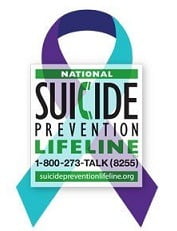It may seem surprising to discuss bullying, because you might think that type of behavior has diminished as our society has progressed. However, bullying is actually on the rise, made more devastating due to electronic and social media outlets available to children of all ages.
In essence, bullying is a tactic using a variety of activities to maliciously harm another through direct or indirect methods. Direct attacks can range from name-calling and taunting to physical assault. Indirect attacks can be as subtle as being excluded or rejected by others to spreading rumors that damage a person’s reputation.
The effect of bullying on the recipient can be devastating, including depression and loss of self-confidence. It can also end with physical harm or violence. There are steps a child or teenager can follow to minimize and possibly stop the bullying behavior before it gets out of control.
1. Take it to an Adult
Since most bullying of children takes place at school, it’s important for the target being bullied to speak to a trusted adult. It could be a parent or school official, like a counselor or principal. Especially in the teenage years, teens may be hesitant to do this because they will be perceived as tattling, or they will feel that telling someone will increase the abuse. However, bullies need to be stopped, and forcing their exposure from out of the shadows is one of the best ways to diffuse their behavior. If one adult doesn’t help, then keep trying until one is found who will.
2. Change Patterns to Avoid the Bully
If the bully knows the target’s daily routine, the bully will try to catch the person at their most vulnerable point. However, if possible, the child or teen should change their daily pattern and avoid the confrontation in the first place. They can make sure others are around, like adults or supervisors; they can avoid isolated areas.
3. Don’t Get Rattled
No matter how much the bullying behavior causes upset, the child or teen should walk with head held high, as though nothing upsetting were going on. If a bully knows his/her actions are causing damage, he/she will continue. A person who is standing straight and making eye contact will be less likely to be picked on because the bully will note their self-confidence.
4. Avoid Confrontation
Don’t stoop to the level of the bully. Stay calm and interact firmly with the person. Humor can even be used to diffuse tense situations.
5. Don’t Stop Living
Make new friends and travel in circles to avoid being alone and to show the bully that your life is unaffected by their treatment. Good friends will stick up for each other, and bullies will shy from group confrontation.
6. Enhance Self-Confidence
If the bullying has progressed over time, it may be necessary for the bully’s victim to engage in activities to help restore self-confidence and self-esteem. Pursuing interests and talents will go a long way to feeling accomplished.
Left unchecked, bullying can have a life-long impact on those who unfortunately find themselves in the bully’s crosshairs. Victims can feel alone, isolated or rejected. It’s important they continue to live and grow, to get involved in organizations and to become part of a supportive group that will make them feel wanted and successful.
Bullying is a complex problem that should always be handled by talking to others. Trying to deal with one alone will usually not solve the problem. Don’t be afraid to reach out to others for help because that help may reduce the suffering of the victim and others as well.






